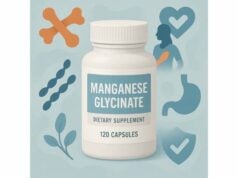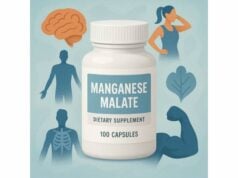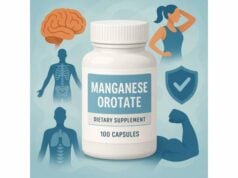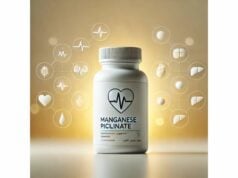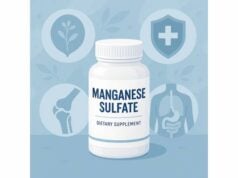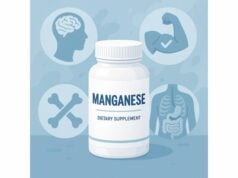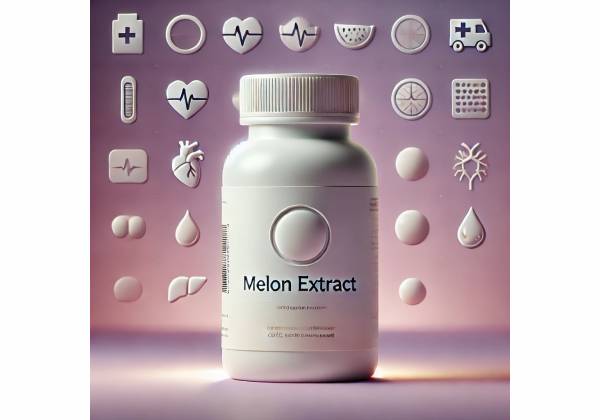
Melon extract—most often derived from a specific variety of cantaloupe (Cucumis melo L.) naturally rich in the antioxidant enzyme superoxide dismutase (SOD)—is gaining attention for stress support, skin photoprotection, and recovery from exercise. Unlike multivitamin antioxidants, SOD-rich melon concentrates work by supporting the body’s own antioxidant defenses (SOD, catalase, glutathione peroxidase) rather than acting only as direct free-radical scavengers. Branded forms you may see on labels include SOD-rich concentrates protected by lipid or protein matrices to survive digestion (for example, microencapsulation or wheat–gliadin complexes). Early human trials suggest benefits for perceived stress and fatigue, sun sensitivity (minimal erythema dose), and cosmetic outcomes like the appearance of cellulite when a standardized dose is taken daily. Most people tolerate melon extract well; the main exceptions involve wheat/gliadin-containing formulas and individuals with melon allergy. This guide explains what melon extract is, who it helps most, how to use it correctly, how much to take, what to watch for, and how strong the evidence is so you can make an informed choice.
Quick Overview
- Daily SOD-rich melon extract may reduce perceived stress and physical or mental fatigue over 4–12 weeks.
- Photoprotective benefits appear after several weeks and complement—not replace—broad-spectrum sunscreen.
- Typical oral ranges: 10–20 mg/day of standardized SOD melon concentrate (≈140–280 IU SOD) or 40 mg/day for cellulite formulas; some gliadin-complexed products use 250–500 mg/day.
- Avoid if you have celiac disease or a wheat allergy when the product uses a wheat–gliadin matrix; choose a gluten-free encapsulation instead.
Table of Contents
- What is melon extract and how does it work?
- What benefits does research actually show?
- How to choose and use melon extract
- How much should I take and for how long?
- Side effects, interactions, and who should avoid it
- How strong is the evidence and what is still unknown?
What is melon extract and how does it work?
“Melon extract” in dietary supplements typically refers to a concentrated preparation from a non-GMO cantaloupe cultivar (Cucumis melo L.) naturally high in superoxide dismutase (SOD). SOD is an enzyme found in humans and other organisms; its job is to convert the superoxide radical (a reactive oxygen species) into hydrogen peroxide, which other enzymes (catalase and glutathione peroxidase) then neutralize to water and oxygen. Together, these enzymes form a coordinated antioxidant defense system that protects cells from oxidative stress.
Two practical hurdles must be solved for SOD to be useful orally:
- Gastrointestinal degradation: Free enzymes are broken down by stomach acid and digestive proteases.
- Delivery to targets: Even if partially absorbed, exogenous SOD needs to influence systemic antioxidant defenses.
Standardized melon extracts tackle these by protecting SOD during digestion (for example, with lipid microencapsulation or by complexing SOD with a wheat protein matrix called gliadin) and by priming endogenous defenses. Rather than relying on the supplement’s enzyme alone, the body responds to the extract by up-regulating its own antioxidant enzymes—SOD itself as well as catalase and glutathione peroxidase—in various tissues. Practically, that means the measurable effect is less about the supplement’s SOD activity passing directly into the bloodstream and more about signaling your cells to raise their built-in antioxidant capacity.
It’s also important to distinguish SOD-rich melon extract from other “melon” ingredients:
- Seed or rind extracts (from melon or watermelon) are often standardized for polyphenols or amino acids (e.g., citrulline) and do not deliver SOD.
- Bitter melon (Momordica charantia) is a different plant, used for glucose support, and is not the subject of this article.
Forms you may encounter on labels
- Standardized SOD melon concentrate microencapsulated in lipids; typical capsule content: 10–20 mg delivering ≈140–280 IU SOD.
- Gliadin-protected SOD complex (sometimes labeled “GP-SOD” or similar), often dosed at 250–500 mg/day; the gliadin (a wheat protein) acts as a protective carrier.
- Topical or oral-plus-topical combinations used in skin photoprotection studies.
Mechanisms in plain language
- Reactive oxygen species (ROS) buffering: By boosting SOD activity, cells more rapidly detoxify ROS generated by stressors (exercise, UV exposure, mental stress).
- Downstream effects: Improvements in markers like minimal erythema dose (how much UV you can tolerate before redness), perceived stress scores, or muscle recovery metrics reflect this upstream antioxidant support.
- Anti-inflammatory signaling: Lower oxidative tone can blunt pro-inflammatory cascades that contribute to soreness, skin changes, or fatigue.
Bottom line: melon extract is best thought of as a cellular resilience nutrient—supporting your own defense systems rather than acting as a high-dose direct antioxidant.
What benefits does research actually show?
Perceived stress and fatigue
Randomized, double-blind, placebo-controlled trials of SOD-rich melon concentrate (often 10 mg/day providing ≈140 IU SOD) report reductions in perceived stress and improvements in physical and mental fatigue after continuous use. Participants typically notice meaningful changes between four and twelve weeks, with the largest differences observed at three months in trials that extended that long. Quality-of-life scores—covering vitality, pain, and social/role functioning—have also improved versus placebo. These results align with the biological expectation: when cells manage oxidative stress better, psychometric measures tied to stress perception and fatigue often improve.
Skin photoprotection and complexion
Skin is highly sensitive to ROS generated by ultraviolet (UV) exposure. Clinical work with a specific melon concentrate (used orally and/or topically) has shown increases in the minimal erythema dose (MED)—the UV threshold before visible redness—alongside favorable changes in sunburn cell counts, melanin accumulation after UV exposure, and skin antioxidant enzyme levels. These studies support a complementary role for melon extract alongside broad-spectrum sunscreen and sun-smart behavior. Some dermatology studies also explore adjunctive use of gliadin-protected SOD with medical phototherapy protocols, suggesting improved outcomes in select pigmentary conditions when the antioxidant system is supported during treatment.
Appearance of cellulite
In a double-blind, placebo-controlled trial involving women with visible cellulite, 40 mg/day of a dry SOD-rich melon juice concentrate over 8 weeks produced a modest but statistically significant reduction in the appearance of thigh cellulite compared with placebo, with some responders visible as early as four weeks. Mechanistically, the improvement is hypothesized to involve reduced oxidative stress within subcutaneous tissues, less fibrotic remodeling, and improved lipid metabolism in adipocytes.
Exercise recovery
During eccentric (muscle-lengthening) exercise, ROS generation and microdamage can contribute to soreness and delayed recovery. Supplementation with a bioactive melon concentrate in controlled settings has been associated with less muscle fibrosis and better recovery markers after challenging protocols. These data suggest melon extract can be a useful add-on for recreational athletes or anyone reconditioning after a break, particularly when combined with sleep, protein adequacy, and progressive training.
Mobility and healthy aging
In adults at risk for mobility limitation (sometimes described as “locomotive syndrome”), a double-blind trial of a gliadin-protected SOD melon extract reported improvements in subjective symptoms such as knee or lower-back discomfort and function scores. While preliminary and in need of larger confirmatory studies, the findings are consistent with the broader theme: easing oxidative stress can support tissue resilience important for day-to-day movement.
What to expect in real life
- Timeline: Most benefits accrue with daily use for 4–12 weeks. For photoprotection, begin 2–4 weeks before periods of higher sun exposure.
- Magnitude: Expect modest, noticeable changes rather than dramatic effects. Think fewer “wired-and-tired” afternoons, slightly improved recovery or skin resilience—not a cure-all.
- Stacking: Results often improve when melon extract is part of a comprehensive routine: sleep, nutrition, sunscreen, and smart training.
How to choose and use melon extract
1) Identify the right type for your goal
- Stress and fatigue support: Look for standardized SOD-rich melon concentrate at 10–20 mg/day (≈140–280 IU SOD).
- Skin and sun resilience: Choose either the oral standardized SOD extract alone or a combined oral + topical approach used in clinical settings. Start before peak exposure periods.
- Cellulite appearance: Seek products specifically standardized to the 40 mg/day regimen used in cosmetic trials.
- Adjunctive dermatology protocols: When a clinician advises, gliadin-protected SOD complexes may be used as an adjunct to phototherapy.
2) Read the label like a pro
- Standardization: Favor products that declare SOD activity (IU) and the exact melon extract dose (mg).
- Matrix/carrier: If you have celiac disease or wheat allergy, avoid gliadin-containing formulas; choose gluten-free encapsulation (e.g., lipid-protected microgranules) instead.
- Excipient transparency: Look for clear excipient lists; avoid unnecessary colorants or proprietary blends that hide the SOD amount.
3) When and how to take
- With food: Most people tolerate melon extract best with a meal; this also supports lipid-based delivery systems.
- Consistency over intensity: Take it at the same time daily; benefits relate to steady use, not on-demand dosing.
- Sun strategy: For photoprotection, continue daily dosing during the entire period of increased UV exposure and maintain sunscreen and shade practices—the extract is a complement, not a substitute.
4) Smart combinations
- Foundations first: Adequate protein (for endogenous antioxidant enzymes), vitamin C (collagen support), and sleep improve results.
- Avoid megadosing other antioxidants right before high-intensity training unless advised; extreme antioxidant loads can blunt training adaptations. Melon extract’s endogenous-defense approach is generally compatible with performance goals.
- Skin routines: If using topicals, pair with broad-spectrum SPF 30+, vitamin C serums, and retinoids at night (if tolerated) for complementary mechanisms.
5) Storage and quality
- Protect from heat and moisture. Enzymes are sensitive; keep the bottle tightly closed, away from light.
- Batch testing: Prefer brands that provide third-party testing for identity and potency.
6) Realistic expectations and tracking
- Track perceived stress (e.g., a 0–10 rating), sleep quality, workout recovery, or skin changes (photos under consistent lighting) weekly. Decide after 8–12 weeks whether the benefits justify continued use.
How much should I take and for how long?
Typical ranges used in human studies
- Standardized SOD melon concentrate: 10 mg/day (≈140 IU SOD) is the most common research dose for stress and fatigue; some programs use 12 weeks for full effect.
- Cosmetic/cellulite formulas: 40 mg/day of dry SOD-rich melon juice concentrate (≈480 IU SOD) for 8 weeks improved the appearance of thigh cellulite in a controlled trial.
- Gliadin-protected SOD complex (GP-SOD): Often 250–500 mg/day in clinical contexts for skin-related outcomes. Because gliadin is wheat-derived, anyone with celiac disease or wheat allergy should avoid this form and select a gluten-free encapsulated alternative.
Timing recommendations
- Daily, with breakfast or your largest meal. This aids tolerability and absorption for lipid-protected systems.
- Photoprotection: Begin 2–4 weeks before expected higher sun exposure; continue throughout and reassess after the season.
Duration and cycling
- Initial evaluation window: 8–12 weeks of daily use.
- Maintenance: If you benefit, many people continue at the same dose or use seasonal cycles (e.g., spring and summer for skin; stressful quarters at work for stress support).
- Exercise blocks: For recovery emphasis, use during heavy training blocks or return-to-training phases.
Upper limits and special cases
- There is no universally accepted upper intake level for SOD-rich melon extract. Stick to label-directed doses that mirror published regimens.
- If using multiple products (e.g., a stress formula and a skin formula), sum the total SOD activity and avoid exceeding combined doses used in trials without clinician oversight.
For different audiences
- Adults new to supplements: Start at 10 mg/day of standardized SOD melon concentrate (≈140 IU SOD).
- Cosmetic focus: If cellulite appearance is your main goal, consider 40 mg/day for 8 weeks, then reassess.
- Athletes/recreational exercisers: A standard 10 mg/day regimen can be layered into training; keep recovery basics (sleep, protein, hydration) on point.
- Dermatology adjuncts: Only under clinician guidance if using with procedures or phototherapy.
Side effects, interactions, and who should avoid it
Common tolerance
SOD-rich melon extract is generally well tolerated at research doses. When side effects occur, they are usually mild and transient, including digestive upset, bloating, or nausea—most often if taken on an empty stomach.
Allergy considerations
- Melon allergy: Avoid melon-derived products altogether if you have known allergy to melon or related fruits.
- Wheat/gliadin: Some formulas use wheat–gliadin to protect SOD through the gut. Avoid these if you have celiac disease, non-celiac gluten sensitivity, or a wheat allergy. Choose a gluten-free lipid-encapsulated SOD melon concentrate instead.
Medication and condition cautions
- Dermatology treatments: If you’re undergoing phototherapy or using photosensitizing drugs, tell your clinician you’re taking an antioxidant supplement. Some protocols intentionally pair controlled oxidative exposure with therapy; your care team should decide if GP-SOD or another antioxidant fits.
- Cancer therapy: Because certain chemotherapies and radiation work via oxidative mechanisms, do not start any high-antioxidant supplement without oncologist approval.
- Autoimmune conditions: Although not a known trigger, any supplement that modulates immune or oxidative tone should be introduced cautiously with clinician oversight if you have active autoimmune disease.
- Pregnancy and lactation: Insufficient data. Avoid unless your prenatal clinician specifically recommends it.
- Children: Evidence is limited; stick to adult use unless guided by a pediatric specialist.
Interactions
- Other antioxidants: Routine combination with multivitamins is common, but avoid simultaneously layering very high-dose antioxidant cocktails immediately around workouts if strength and endurance adaptations are your priority.
- Gluten-free labeling: If you are strictly gluten-free, confirm the product is gluten-free certified. “Wheat-free” and “gluten-free” are not interchangeable.
When to stop and seek care
- New or worsening rash, hives, wheezing, or swelling—seek immediate care (possible allergy).
- Persistent GI discomfort after one week of taking with food—discontinue and reassess the formulation or dosage with a professional.
How strong is the evidence and what is still unknown?
What’s solid
- Multiple randomized, double-blind, placebo-controlled trials in healthy adults show benefits for perceived stress, fatigue, and quality of life at 10 mg/day of standardized SOD melon concentrate over 4–12 weeks.
- Clinical work indicates photoprotective effects, including increases in minimal erythema dose and favorable changes in skin markers, when a specific melon concentrate is used orally and/or topically.
- In cosmetic settings, 40 mg/day of a dry SOD-rich melon juice concentrate for 8 weeks produced modest, significant improvements in the appearance of thigh cellulite.
- Trials exploring adjunctive roles with dermatologic phototherapy or for mobility-related symptoms show promising signals, consistent with the mechanism of strengthening endogenous antioxidant defenses.
What’s less certain
- Long-term outcomes: Most trials run 4–12 weeks (some up to 24 weeks). We need longer studies to confirm durability and safety over many months or years.
- Generality across brands: Benefits are strongly formulation-specific. A result with one standardized extract does not guarantee the same effect from any product labeled “melon extract.”
- Bioavailability questions: While evidence shows changes in endogenous antioxidant enzymes after supplementation, we still lack a universal biomarker that directly ties oral SOD dose to tissue-level SOD activity in humans across organs.
- Head-to-head comparisons: We have very few trials comparing lipid-encapsulated vs gliadin-protected SOD or different dose levels in the same population.
- Functional endpoints: For athletes and workers, we need more research on objective performance, soreness timelines, and injury rates, not just biochemical or questionnaire outcomes.
Practical interpretation
- For stress resilience and daytime energy, the evidence supports a modest, meaningful effect when the extract is used consistently.
- For skin, melon extract is best used as a companion to proven strategies (sunscreen, shade, protective clothing). Expect incremental improvements, especially if your baseline antioxidant status or sun sensitivity is low.
- For cosmetic cellulite, the effect size is modest; combining with resistance training, protein adequacy, massage, and sleep can improve your odds of visible change.
What would make the case stronger
- Large, independent, multi-center trials with pre-registered endpoints, transparent funding, and standardized reporting of SOD activity (IU) and matrix type.
- Direct dose–response studies and comparisons between carriers (lipid vs gliadin).
- Trials integrating wearables or digital cognitive testing for objective measurements alongside psychometric scales.
References
- Dietary Supplementation with a Superoxide Dismutase-Melon Concentrate Reduces Stress, Physical and Mental Fatigue in Healthy People: A Randomised, Double-Blind, Placebo-Controlled Trial 2014 (RCT)
- A Specific Melon Concentrate Exhibits Photoprotective Effects from Antioxidant Activity in Healthy Adults 2018 (Randomized Controlled Trial)
- Supplementation with a Bioactive Melon Concentrate in Humans and Animals: Prevention of Oxidative Damages and Fatigue in the Context of a Moderate or Eccentric Physical Activity 2020 (Human and Animal Study)
- Oral gliadin-protected superoxide dismutase in addition to phototherapy for treating non-segmental vitiligo: A 24-week, prospective, randomized, placebo-controlled study 2021 (RCT)
- Clinical Efficacy of Melon GliSODin® for the Treatment of Aging-Related Dysfunction in Motor Organs—A Double Blind, Randomized Placebo-Controlled Study 2022 (RCT)
Disclaimer
This guide is educational and does not replace personalized medical advice. Melon extract can interact with medical treatments and may not be appropriate for everyone, including people with melon allergy, celiac disease or wheat allergy (for gliadin-based products), those who are pregnant or breastfeeding, and individuals undergoing cancer therapy or dermatologic procedures. Always discuss new supplements with a qualified healthcare professional who knows your medical history and medications.
If you found this helpful, please consider sharing it with friends or colleagues on Facebook, X (formerly Twitter), or any platform you prefer, and follow us for future evidence-based guides. Your support helps us continue creating high-quality content.

